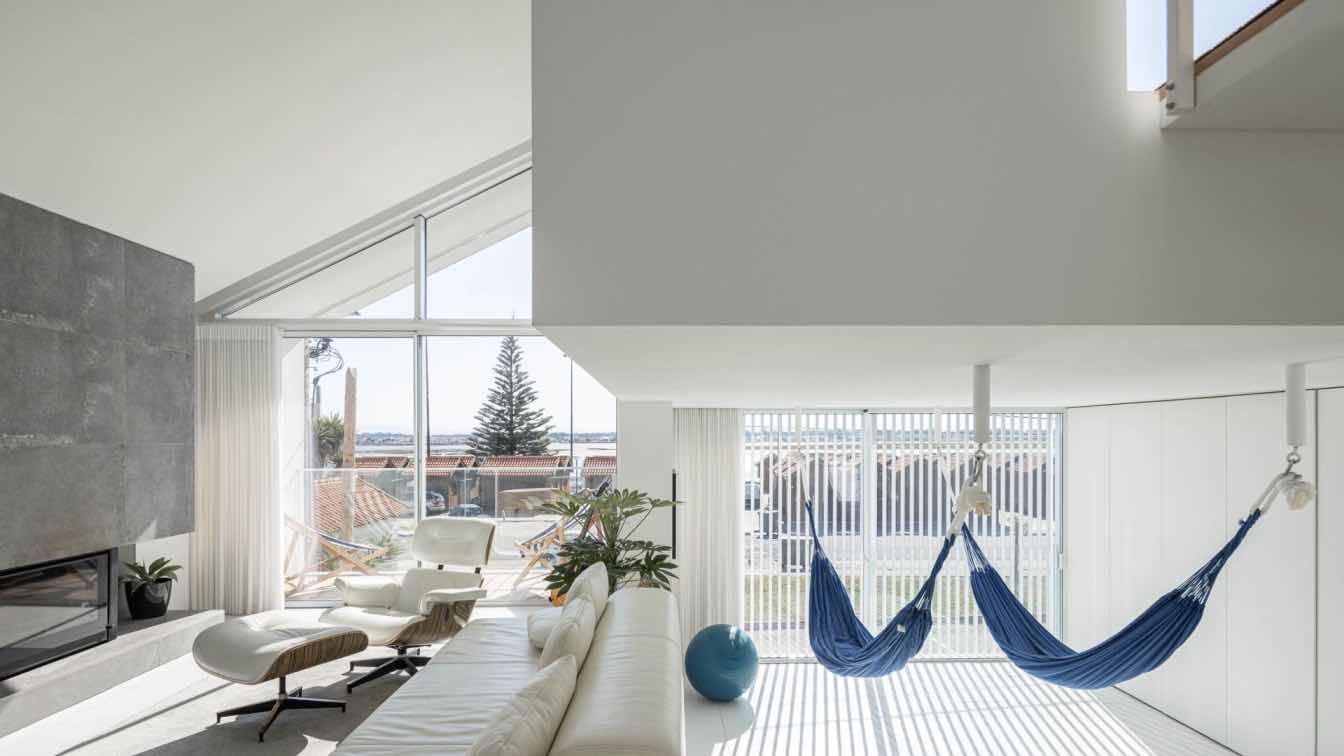Rómulo Neto Arquitetos LDA: The “Salt Color House” is in front of the so-called Mira channel in Costa Nova do Prado. This place, due to the salinity of its waters and surrounding vegetation, the colors and odors that emanate, takes me back to my past, my parent’s house, where I grew up and lived for many years, under this atmosphere of marine nature. When idealizing and conceiving the project of this house, I faced a huge challenge. In effect, it condensed in me the creative figure of an architect and, likewise, the usufruct figure of a demanding client. In the beginning, the conflict of figures clouded the clarity and objectivity necessary for the design, however, over time and with the maturation of some aspects of the project, the result was, in my humble opinion, doubly achieved.
But other challenges were imposed. Sharing the same space with another person, my wife, generated different compulsions and concerns within the framework of each person's idiosyncrasies, namely, how they wanted to inhabit and live in the house. Thus, sharing the same space implied understanding the other, and forced me to transact with her, concepts of aesthetics and functionality and sometimes give up more erudite and less experienced lines of architecture.
The materials chosen for the construction revolved around ceramics, wood, and aluminum. In the colors, white predominated as the primary element of the entire house, salting it in almost all its corners with baskets of white. It was essential to create an intimate relationship between the interior and the exterior. For this purpose, an interior patio was designed to create a bridge with the south facade of the house and achieve a natural light gambier for all its compartments. Half floors were created, so that the basement floor was not exposed to possible flooding due to the rise in the water table and that vertical dynamics existed between the floors.
The social area is located on the upper floor, a spacious area with a very generous ceiling height overlooking the estuary. It is a space to receive family and friends on festive days, connected to the roof terrace, the focal point of the house, where you can enjoy a more direct and surrounding view of the estuary. To the west, a large vertical slatted wall was installed, trying to hide the coexistence with the other more dilapidated buildings improvised by the local people of the coast.































































































































